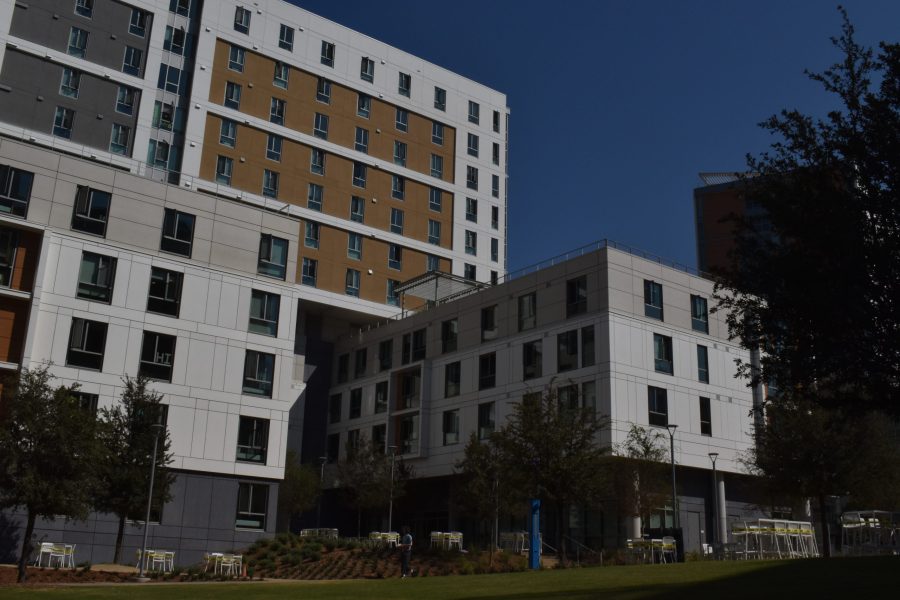UC San Diego plans to resume using triple rooms at full capacity starting in Fall 2022. According to an email sent to students last week, the university will be able to provide an additional 700 beds to undergraduate residents for the 2022–2023 academic year.
In response to the pandemic, UCSD eliminated around 2,000 beds to ensure social distancing and avoid overcrowding. Combined with higher student enrollment, the implementation of COVID-19 restrictions has caused a housing shortage.
According to The San Diego Union-Tribune, in Summer 2021, there were almost 3,200 students on housing waiting lists. Last year, UCSD admitted a record 52,946 first-year and transfer students, according to UC San Diego News Center.
The additional beds in Fall 2022 will be provided on a priority system. Namely, students in scholarship programs with four-year housing guarantees are served first, then new incoming first-year, transfer students, and returning second-year students who remain in on-campus housing. Detailed priority system information can be found on the HDH website.
“UC San Diego has increased its undergraduate housing capacity by more than 72% (more than 5,000 beds) since the fall of 2010, but there is still tremendous demand for student housing,” Leslie Sepuka, the associate director of university communications, wrote in an email to The UCSD Guardian. “The University controls what it can by providing robust financial aid, investing in the construction of additional student housing and providing on-campus housing for students at rates that are more favorable than the local rental market.”
In order to compensate for the increased enrollment, Sepuka noted multiple construction projects have been approved to provide new housing within the next few years.
“The Theatre District Living Learning Neighborhood will provide housing for an additional 2,000 undergraduate students when it opens in 2023.” Sepuka said. “The University of California Regents approved much-needed housing for approximately 1,310 transfer and upper-division undergraduate students at their January meeting. Construction of the Pepper Canyon West student housing is anticipated to start this summer, with the goal of opening in the fall of 2024.”
Allocations of triples will be spread across campus. Specific locations will be identified in collaboration with each community’s Residence Life team, with consideration on square footage, ceiling heights, wall soffits and other physical limitations, such as room area, ceiling heights and infrastructure.
Beyond pandemic concerns, triples have posed some safety hazards in the past. As reported by The San Diego Union-Tribune, two former UCSD officials said that because UCSD had stacked students too high, some of them had to move carefully to avoid being hit by the fire sprinklers in the ceiling. Also, because of low bed fences, some students even fell from their beds at times.
Despite some criticisms, students such as LouAnne, a Sixth College junior residential assistant on campus, have praised triple occupancy housing as an acceptable option.
“Last year, there was a housing crisis.” LouAnne said. “Outside housing is really expensive, so a triple room was the best alternative in my freshman year — also because of the campus vibe, but these were cut out because of the COVID. So basically, I just spent one quarter and a half there.”
Last year the average rent around University City surged to $2,745 in the second quarter, while on-campus housing costs ranged from $1110 to $1400 per month.
“The triple housing was an OK experience.” LouAnne continued. “When I walked in, it [was] always crammed. I slept on the upper bed. Since there was basically no fence, some people fell from bed, and my head always hit the ceiling. However it’s still an opportunity to [bind] people together, a positive way to be surrounded by people.”
Student enrollment is expected to continue rising, with Chancellor Pradeep Khosla saying UCSD may reach the 50,000 mark within 10 years. On-campus housing policies for the next incoming year will still depend on an adaptive strategy of the Return to Learn program and are subject to changes as a result of the ongoing pandemic.
Photo taken by Ellie Wang for The UCSD Guardian














